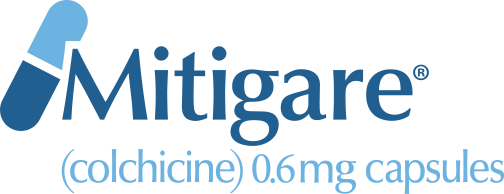
According to the Centers for Disease Control and Prevention, more than 70 percent of American adults are considered overweight or obese.1 Multiple studies show that our increasingly sedentary lifestyles are putting our health at risk.2,3 But finding time for exercise is easier said than done. How can I fit physical activity into my busy life?
The issue with lifestyle
Thanks to modern transportation, technology and convenience, we don’t have to move as much as previous generations did.2 And because many of us sit at a desk all day, we don’t have the opportunity.2 But finding the time to become more physically active is worthwhile. Becoming more active can help you manage your overall health and maybe even improve your gout symptoms.4,5
The impact of extra weight
Higher uric acid levels are the main reason people develop gout and suffer with flares.6 When you carry extra weight, it can become harder for your kidneys to remove excess uric acid from your body.6 But take heart—if you are overweight, gradual weight loss can help lower your uric acid levels and may help reduce your risk of gout attacks.5 However, be sure to talk with your doctor before starting a weight loss plan.
The benefits of physical activity
All older adults can benefit from regular physical activity, and it does not have to be strenuous to be worthwhile.4 A moderate amount of physical activity, preferably every day, has many potential benefits which may include4:
- Reduced risk of death from heart disease
- Reduced risk of developing high blood pressure, colon cancer and diabetes
- Reduced risk of falling and breaking a bone
- Reductions in blood pressure (in people with high blood pressure)
- Help controlling the joint swelling and pain associated with arthritis
- Improvements in stamina and muscle strength (even in those with chronic, disabling conditions)
- Reduced symptoms of anxiety and depression
- Improvements in mood and well being
- Help maintaining healthy bones, muscles and joints
How to get started
Although we know that exercise is worthwhile, it can still be hard to find the time to fit it in. Getting started or maintaining an active lifestyle may take a little planning. Start here to get and stay active:
- Take Small Steps—Begin with just 5 to 10 minutes of exercise at a time.4 Sessions don’t have to be long to be beneficial.4
- Keep It Simple—Choose basic activities, like walking. You may be more likely to exercise if you do not need special equipment.
- Check Your Calendar—Keep track of your daily activities for a week. Then, review your calendar for times when you can do something active.
How to stay on track
Sometimes you have to get creative to find time to exercise. Below are some ways to work physical activity into your busy life:
- Walk or ride a bicycle to work when possible. If you take the bus or train, get off a few stops early and walk the rest of the way
- Set your alarm a little early. Go for a walk or do some stretches first thing in the morning
- Take a walk on your lunch hour
- Play outside with your children or grandchildren
- Go dancing with your significant other or friends
- Keep a set of hand weights or a jump rope near the television. Exercise during commercials
- Walk with your dog (consider volunteering at a local animal shelter if you do not have a dog)
- Count your steps. Wearing a pedometer will track your progress (and may also motivate you to move more)
- Add exercise to your daily activities:
- Take the stairs instead of the elevator
- Park at the far end of the lot and walk the rest of the way
- Take telephone calls standing up
How to exercise safely
Be sure to talk to your doctor before you start any exercise program. Your doctor knows your current health status and potential limitations and can help you determine which kinds of exercise are best for you.
NOTE: This article was not written by a medical professional and is not intended to substitute for the guidance of a physician. These are not Hikma’s recommendations for gout flare prevention, but rather facts and data collected from various reliable medical sources. For a full list of resources and their attributing links, see below.
